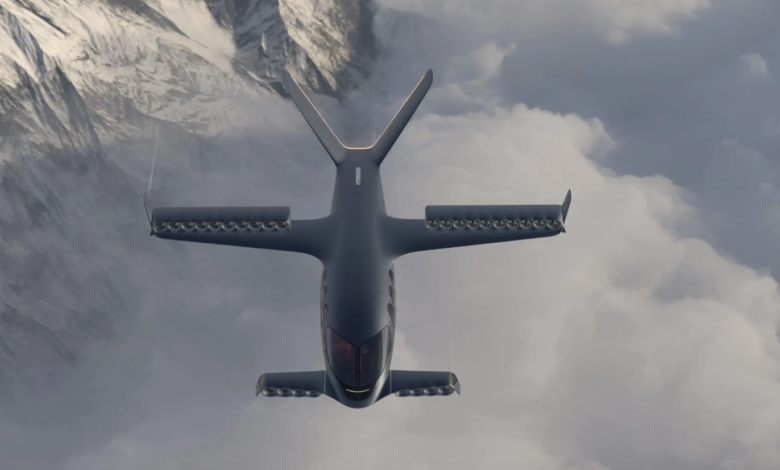In Switzerland developed a Hydrogen aircraft with vertical takeoff
This hydrogen plane, proposed in two models, reaches a range of almost 2 thousand km
From a Swiss startup, arrives with the first hydrogen aircraft to take off and landing vertically. Sirius Aviation AG unveiled its Sirius Jet, designed in collaboration with BMW’s Designworks and the Sauber Group.
The first demonstration flights will be made in 2025, with the company convinced that it will obtain full certification for commercial flights by 2028. The project is essentially a smaller version of the German Lilium Jet, but runs on hydrogen for high-density energy storage and much longer range. The Sirius Jet is available in two variants: Sirius Business Jet and Sirius Millennium Jet. The first is a VTOL aircraft that can accommodate up to three passengers and has a flight range of 1,850 km. Equipped with a pressurized cabin and intubated fan design solutions, it is designed to reach altitudes of 9,000 meters and a cruising speed of 600 km/h, producing just 60 dB of noise.
The Sirius Millenium Jet, however, is the commercial version, which can accommodate up to five passengers. This version sacrifices part of the hydrogen tanks to ensure two extra seats, reducing the range of flight 1,046 km. The cruise speed remains identical to that of the most sporty cousin, as well as the maximum altitude of 9 thousand meters high, with the same sonic signature. In a critical emergency, an emergency parachute is programmed to activate automatically.
Sirius aircraft will mount 20 fans, each just 30 cm in diameter, along the wings and 8 mounted in the canard. The fans will be driven by electric motors. The quietness of the Sirius – producing about 95% less noise than a helicopter – will allow it to operate close to communities with minimal acoustic impact.
Despite interesting numbers and properties, many challenges remain to be overcome before hydrogen can be adopted on a large scale in aviation. The use of liquid hydrogen, in particular, poses significant logistical and technological obstacles due to the need to keep it at extremely low temperatures throughout the process of distribution and flight.






